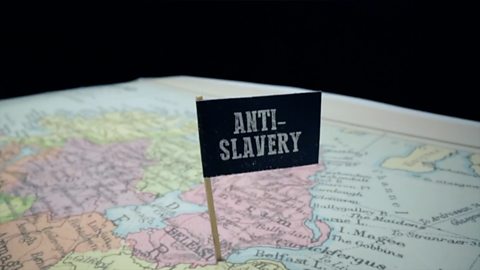Key points
- Starting in the medieval period, a series of powerful kingdoms developed in West Africa.
- These West African kingdoms and empires developed their own diverse and rich cultures, art, histories and religions.
Video about precolonial Africa
Narrator: From the medieval ages, West Africa was home to a range of powerful kingdoms and empires with their own diverse cultures, identities and people. The 13th century saw the rise of Mansas and the Empire of Mali. The Mansas brought huge wealth and established Islam as the main religion. They created centres of learning and culture at Timbuktu and Djenné.
The Kingdom of Benin was founded by the Edo people. It was ruled by the Divine Obas. In 1440, Oba Ewuare turned Benin City into a flourishing city state and used his military to expand the kingdom. The Obas dominated trade along the coast and ruled over tribes in the east and west of the region. And the kingdom was renowned for its artworks, made of bronze, iron and ivory, which often depicted the Obas and Iyobas.
The 15th century also saw the rise of the Songhai Empire and their Warrior King, Sonni Ali, descended from the fishing tribes of the Niger River. He captured Timbuktu and the other cities along the Niger River with his army of cavalry and canoes. The empire used the river to spread wealth and learning across the region.
The early 18th century saw the rise of the Asante Empire, who established a new societal structure made up of leaders from the tribal regions. Women were of high status and had a very important role to play in society as well, although the king, the Asantehene, was the leader. The Queen of the Asante was critical in choosing regional leaders and involved in all decisions of the empire. The Asante people are still an important part of Ghana today, but this is just a small part of a much larger story of Africa.
The kingdoms of West Africa
Starting in the medieval period, a series of kingdoms rose and fell in West Africa. The kingdoms of Benin, Mali, Songhai, Kongo and Asante each had their own language and unique ways of leading and governing their people, and many practised different religions.
| Kingdom | Ruler | Religion | Interesting facts |
|---|---|---|---|
| The Kingdom of Benin | Ruled by a king, known as the Oba. | Edo | The Oba’s palace was decorated with intricate bronze work, made by skilled craftsmen. |
| The Mali Empire | Mali had kings known as Mansas. | IslamIslam is the name of the religion, and its followers are known as Muslims. Muslims believe that Islam was revealed over 1,400 years ago, through a man called Prophet Muhammad. | Some people remember Mali’s leader, Mansa MusaThe leader of Mali from c.1312 to c.1337. Mansa Musa is remembered by some, as the wealthiest man that has ever lived., as the wealthiest man who has ever lived. |
| The Kingdom of Kongo | The ruler of the Kingdom of Kongo was known as the Mwene KongoThe leader (king) of the Kongo.. | Christianity | The kingdom produced vibrant embroidered textiles and sculptures made from ivory. |
| The Songhai Empire | The rulers of the Songhai Empire were known as Sonni or Shi. | Islam, traditional Songhai religion and Paganism | Sonni Ali is remembered as a strong military leader who greatly expanded the empire. After conquering Tuareg, he brought the Saharan trade routes to his kingdom. |
| The Asante Empire | The King of the Asante was known as the Asantehene. | Akan religion | The Golden Stool was a sacred object and Asante symbol of unity and good fortune. |
Relationship with Europe
The kingdoms of Benin, Mali, Kongo, Songhai and Asante each expanded their territories and developed trading links to exploit the rich natural resources available to them, such as gold, silver and salt. The natural resources helped the empires and kingdoms to develop key trading routes with Europe and the rest of the world. The Mali Empire was one of the world’s major producers of gold, and at the time, many of the coins used in southern Europe could be traced back to West Africa.
Through the expansion of their trading links, kingdoms came into contact with Arab traders. This led empires, including Mali and Songhai, to convert to Islam and build mosques, Islamic learning centres and universities.
Many African kingdoms, including Benin and Kongo, started to develop relationships with Europeans. However, over time, the Europeans sought to gain greater control and power over these kingdoms. In the Kingdom of Benin, the British wanted to control the trade in palm oil and rubber, and in Kongo, the Portuguese enslaved increasing numbers of people through their involvement with the transatlantic slave trade. The period before these countries were colonised is referred to as the precolonial period.
The Kingdom of Benin
The Kingdom of Benin ruled from c.1200 - 1897 in what is now southern Nigeria. Benin was a wealthy kingdom of around 2 million people. They followed a traditional African religion known as Edo, which many people in Nigeria still practise today.
The Kingdom of Benin was led by a series of rulers known as Obas, who were very powerful and believed to be descended from the gods. The Obas ruled with strong authority. They were supported by groups of servants and noblemen who helped them maintain order and collect taxes. The Obas of Benin developed a community of skilled metalworkers who created plaques and figures in bronze, which they used to decorate the Oba’s large palace.
By the 1800s, the Kingdom of Benin was under threat. The British wanted to control the trade in palm oil and rubber. Tensions mounted, and in 1897 the British sent 10,000 soldiers to invade Benin. The capital, Benin City, was burned to the ground, and the Kingdom of Benin became part of the British Empire.
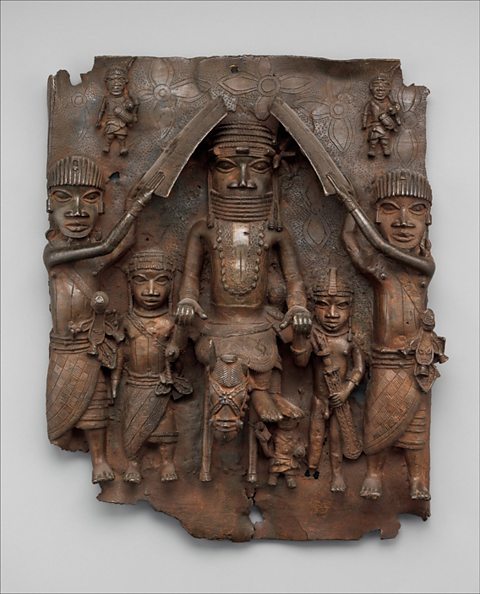
The Mali Empire
In the 1230s, a man called Sundiata KeitaThe first leader of Mali. united a series of smaller kingdoms to form the Empire of Mali. Mali became increasingly powerful, stretching through modern-day Mali, Mauritania, Burkina Faso, Senegal, the Gambia, Guinea-Bissau, northern Ghana and Côte d’Ivoire.
Who was Sundiata Keita?
Sundiata Keita was the first ruler of the Mali Empire. His name means ‘lion prince’ and he was known for his great skill in battle.
In the 1230s, he united several of West Africa’s kingdoms to defeat Ghana’s king, Sumanguru. He then began to conquer more land in the area, calling his new kingdom the Mali Empire.
Records of oral history show that during his reign, the Mali Empire created one of the first charters for human rights. The Manden Charter protected human rights, promoted diversity within communities and abolished the capture and enslavement of people through raids, a practice known as ‘slave-raiding’.
It is argued that Sundiata Keita converted to Islam after coming into contact with many Arab Muslim traders. However, this is widely debated amongst historians. The empire widely practised Islam and many of the descendants of Keita were practising Muslims.
Sundiata Keita died in 1255, but he laid the foundations for Mali to become one of the wealthiest empires in history.
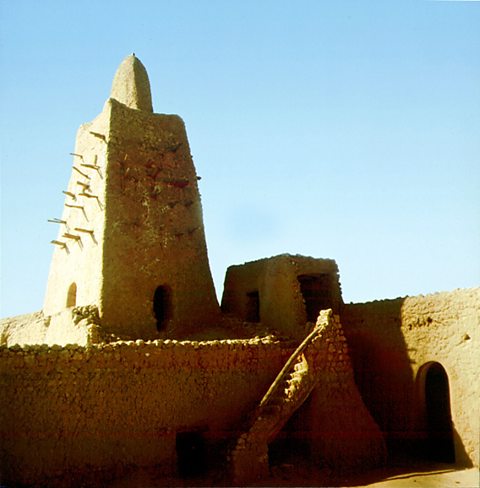
Mansa Musa
Mansa Musa, Sundiata Keita’s great-nephew, ruled the Mali Empire from 1312-1337. Under his leadership, many schools, universities and libraries were built and the empire doubled in size, expanding into the important trading cities of Timbuktu and Gao.
Mali became famous for its trade in gold and the empire became incredibly wealthy. During the medieval period, it is estimated that two thirds of the world’s gold originated from Mali. Some historians have even described Musa as one of the wealthiest men who has ever lived.
In 1324, Musa went on his pilgrimage to Mecca. He is said to have given vast amounts of gold away to the people he met on his journey. When Arab historian Al-Umari visited Cairo a few years later, he stated that Musa “flooded Cairo with his kindness”.
The Mali Empire widely practised Islam and Mali became a centre for Islamic learning.
Following the death of Mansa Musa in around 1337, poor leadership and a decrease in trade saw the empire decline. By the time the last Mansa died in 1610, the empire had lost virtually all its power.

Activity - Put the events in order
The Kingdom of Kongo
The Kingdom of Kongo ruled from c.1390 in what is now northern Angola. It was led by a powerful ruler known as the Mwene Kongo and was made up of around 3 million people.
Kongo was known for its ivory, pepper, spices and other trading goods. From the 1480s, Portuguese traders started to travel to the Congo River to trade.
In the 1480s, Portuguese explorer Diogo C√£o reached the Kingdom of Kongo and was welcomed by the Mwene Kongo. Several years later, the king of Portugal sent royal ambassadors to Kongo and the Mwene Kongo developed strong relationships with the Portuguese royal family. Trade with the Portuguese made the kingdom extremely wealthy.
In 1491, the Mwene Kongo, Nzinga a Nkuwu, was baptismA religious ceremony in which people are welcomed into the Christian faith. into the CatholicismThe traditions and beliefs of the Catholic Church, led by the Pope in Rome. faith. He took the Christian name King Jo√£o, naming himself after the Portuguese king. His son, Mvemba a Nzinga, travelled to Europe before becoming Mwene Kongo. He was also baptised into the Catholic faith, taking the name Afonso.
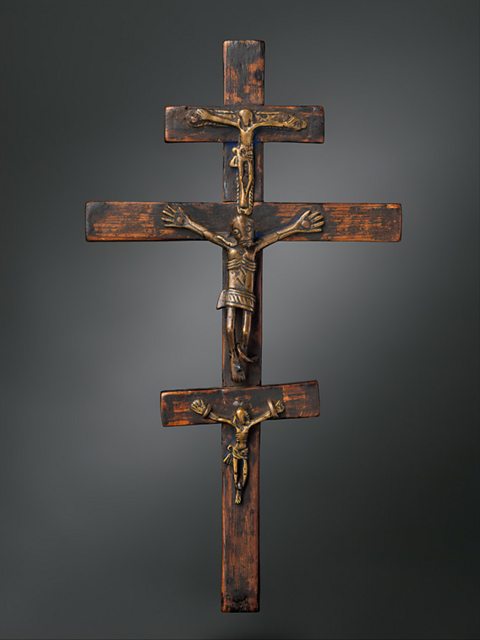
This relationship with Portugal brought many Portuguese settlers to the kingdom. The Portuguese king reached an agreement with Mwene Kongo Afonso, known as the Regimento of 1512, to help organise the Kingdom of Kongo. This involved Portuguese settlers in the Kingdom of Kongo building churches and training the Kongo army. In return Afonso would supply Portuguese traders with copper, ivory and enslaved people, most of whom were captives from Kongo's wars of expansion into neighbouring territories.
However, tensions began to rise when Portuguese traders began to enslave Kongo citizens. In 1526 Mwene Kongo Afonso wrote to the Portuguese king explaining the negative impact the enslavement of Kongo citizens was having on the kingdom. The relationship between the kingdom and Portugal continued to decline and in 1665 the Kongo army was defeated by the Portuguese at the Battle of Mbwila. The Mwene was killed and many Kongo people were enslaved and taken to the Portuguese colony of Brazil.
Following nearly two centuries of power struggles, factional divisionDisagreement or conflict between two groups that are both part of the same state or organisation. and civil warA war fought between two or more armies from the same country., the Kingdom of Kongo officially became a vassal stateA state that has some degree of independence, but is also in some ways subordinate to a more dominant state or empire. of Portugal in 1857. This was agreed by Mwene Pedro V, who required Portuguese military assistance to secure the throne over his relatives, who also believed that they should rule. This agreement gave Portugal authority over the Kingdom of Kongo. It remained a vassal state until 1914, when Portugal abolished the Kingdom of Kongo following a revoltAnother name for a rebellion, an uprising against those in power. against Portuguese rule. The Kingdom of Kongo was absorbed into the Portuguese colony of Angola.
The Songhai Empire
When the Mali Empire began to decline in the 1300s, Sonni leaders seized control of the city of Gao. In the 1400s, the empire expanded dramatically under the leadership of Sonni Ali. In his seizing of Timbuktu, Muslim scholars reported that he was extremely cruel and murdered many of the city's inhabitants.
How do historians remember Sonni Ali?
Many historians described Ali as a formidable ruler who destroyed the city of Timbuktu. Al-Sa’dī described Ali as “a man of great strength and colossal energy” and “a tyrant”. Following his invasion of Timbuktu, Ali showed great hostility towards the city’s scholars, who opposed his unorthodox observance of Islam. North African scholar Al-Maghīlī said that Ali prayed and observed the fasts at Ramadan. However, he also practiced some non-Islamic beliefs and customs.
Askia Muhammad I
In 1493, Sonni Ali’s son, Sonni Baru, was defeated by Askia Muhammad I at the Battle of Anfao. Askia Muhammad I became the leader of the Songhai Empire and under his rule, all of the Songhai Empire became an Islamic state. He built many mosques and Islamic schools and universities across the empire. He also divided the Songhai Empire up into different areas. Each area was ruled by a governor and different systems of rule were developed, which helped Muhammad maintain control and stability across the empire.
Askia Muhammad I was overthrown by his son in 1528, and the Songhai Empire's power declined throughout the 1500s. In 1591 the Moroccan army, which was well-equipped with canons and early types of gun, defeated the Songhai army in the Battle of Tondibi and took control of Gao and Timbuktu.
The Asante Empire
The Asante Empire, which was made up of most of present-day Ghana, was a powerful kingdom located in West Africa. The Asante Empire began in 1701 when military leader Osei Tutu defeated neighbouring kingdoms and took the title Asantehene, which means ‘King of the Asante’. The wealthy empire controlled gold mines and supplied gold to European traders in exchange for weaponry. The Asante Empire also supplied enslaved people to European traders.
The Golden Stool was a sacred object made from solid gold. It represented the Asantehene’s authority as well as being the Asante symbol of unity and good fortune. In 1900, Frederick Mitchell Hodgson, the British Governor of the Gold Coast, demanded that the Asante people give him the Golden Stool. In response, Yaa Asantewaa, the Asante Queen Mother, began a military revolt against the British which led to the War of the Golden Stool. Yaa Asantewaa was defeated in July 1900 and exiled to the Seychelles, along with the Asantehene and other Asante leaders, but the stool was never surrendered to the British. In 1902 the Asante Empire was incorporated into the British Empire. In 1935, partial self-determinationThe right of a country to decide its political status and form its own government. was restored to Asante, which later became part of the independent country of Ghana in 1957.
Test your knowledge
Play the History Detectives game! gamePlay the History Detectives game!
Analyse and evaluate evidence to uncover some of history’s burning questions in this game.

More on Slavery
Find out more by working through a topic
- count5 of 7
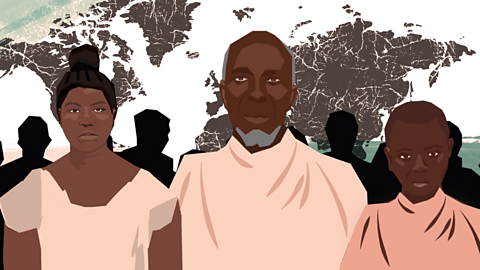
- count6 of 7
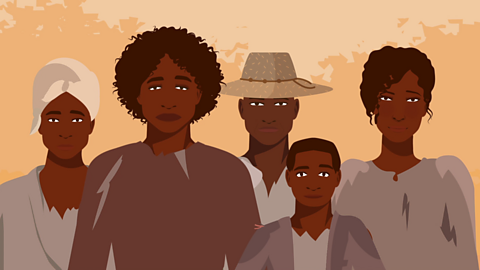
- count7 of 7
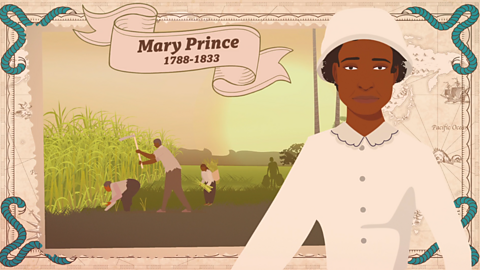
- count1 of 7
